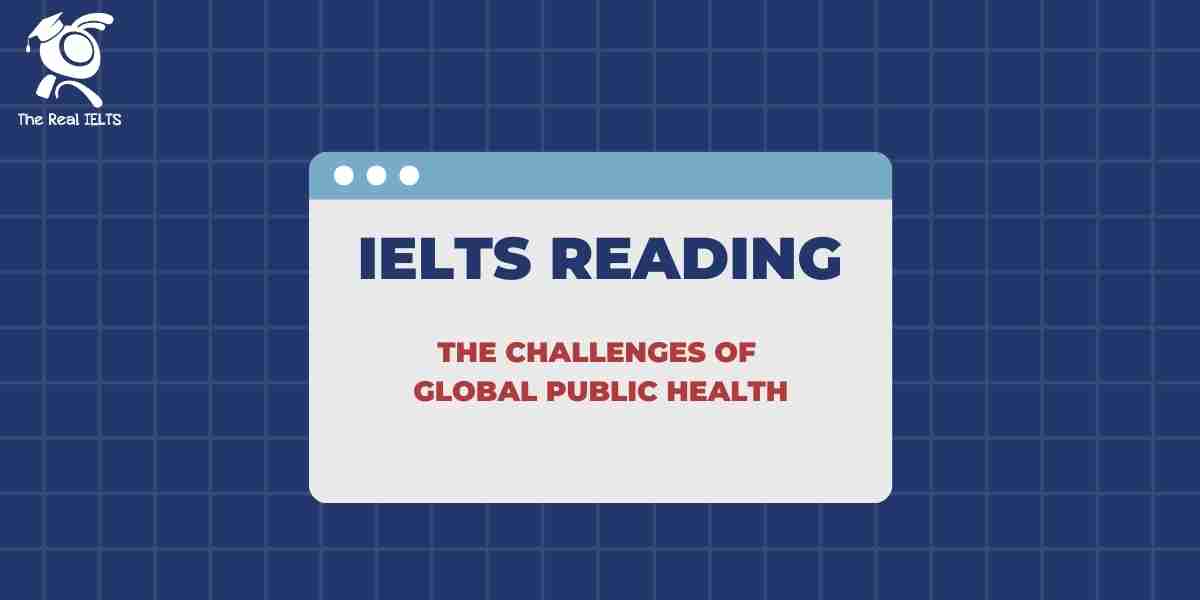IELTS Reading 10: The Role of National Parks là chủ đề thuộc chuỗi bài luyện tập 11 dạng bài IELTS Reading và các bài tập luyện tập.
Học lại bài cũ: IELTS Reading 9: Urban Reforestation and Green Cities.
IELTS Reading: The Role of National Parks
National parks play a critical role in preserving natural ecosystems, protecting biodiversity, and promoting environmental sustainability. These protected areas are established by governments to conserve flora, fauna, and unique landscapes while allowing limited human activity. They serve as sanctuaries for a variety of species that might otherwise face extinction due to habitat destruction, poaching, or other human-induced threats. By setting aside these regions, countries aim to maintain ecological balance and provide a refuge for endangered species, which ultimately supports global biodiversity.
One of the primary functions of national parks is environmental conservation. Forests, wetlands, mountains, and grasslands within these parks act as carbon sinks, absorbing significant amounts of carbon dioxide, which helps mitigate the effects of climate change. Additionally, they safeguard watersheds, ensuring a continuous supply of clean water to nearby communities. Protecting these areas from industrial and agricultural development also ensures that vital ecosystems remain intact, preserving soil quality and regulating local climates. In this way, national parks contribute to the broader goals of combating global warming and preserving natural resources for future generations.
Beyond conservation, national parks offer a wealth of educational and recreational opportunities. These areas serve as outdoor laboratories for scientists and researchers, enabling them to study wildlife, plant species, and geological formations in their natural environments. Schools and universities often conduct field trips to national parks, helping students develop a deeper appreciation for nature and fostering environmental awareness from a young age. For visitors, national parks offer a retreat from the pressures of modern urban life, providing spaces for hiking, camping, wildlife observation, and other outdoor activities. This recreational aspect not only promotes physical and mental well-being but also strengthens public support for environmental protection efforts.
National parks also play a crucial economic role. Tourism associated with these parks generates significant revenue for local economies, creating jobs and supporting businesses in hospitality, transportation, and retail. The funds generated from park entry fees, guided tours, and related activities are often reinvested into maintaining and improving the parks, ensuring their long-term sustainability. In many countries, national parks have become important cultural symbols, representing national pride and a commitment to environmental stewardship. The influx of visitors to these areas can, however, present challenges such as overcrowding and environmental degradation, which need to be managed through sustainable tourism practices.
While national parks are primarily focused on protecting natural environments, they also safeguard cultural heritage. Many parks include historical landmarks, indigenous territories, and ancient ruins, preserving the cultural significance of these areas. Indigenous communities, in particular, often have deep-rooted connections to the land, and national parks can play a role in preserving their traditions and knowledge. Collaborative management between park authorities and indigenous groups can ensure that these areas are protected in ways that respect both natural ecosystems and cultural practices.
Despite their importance, national parks face numerous challenges. Encroachment by illegal logging, mining, and farming activities threatens the integrity of these protected areas. In some regions, the lack of financial resources and trained personnel makes it difficult to effectively monitor and enforce conservation laws. Climate change also poses a significant threat to the ecosystems within national parks, as rising temperatures and changing precipitation patterns alter habitats and force species to migrate to new areas. Addressing these challenges requires international cooperation, sufficient funding, and robust environmental policies to ensure that national parks can continue to fulfill their role in global conservation efforts.
In conclusion, national parks are invaluable for the preservation of biodiversity, environmental protection, and cultural heritage. They offer a wide range of benefits, from educational and recreational opportunities to economic growth and the promotion of environmental stewardship. However, maintaining the integrity of these protected areas requires ongoing effort, particularly in the face of environmental threats and human encroachment. By prioritizing the conservation of national parks, governments can ensure that these natural treasures continue to thrive for generations to come.
Question
1. Multiple Choice (Chọn đáp án đúng)
Question:
What is one of the primary roles of national parks?
A. To allow industrial and agricultural development
B. To protect biodiversity and preserve ecosystems
C. To generate profits from tourism alone
D. To promote urbanization in rural areas
2. True/False/Not Given (Đúng/Sai/Không có thông tin)
Statements:
- National parks are solely created to boost the tourism industry.
- Some national parks contain cultural landmarks and indigenous territories.
- Industrial development is encouraged within national parks to support local economies.
3. Yes/No/Not Given (Có/Không/Không có thông tin)
Statements:
- National parks contribute to combatting climate change by absorbing carbon dioxide.
- The primary reason for creating national parks is to promote international tourism.
- National parks face challenges like illegal logging and climate change.
4. Matching Information (Ghép thông tin)
Questions:
Match the following pieces of information with the correct paragraphs from the reading passage:
i. How national parks help in environmental sustainability.
ii. The educational benefits of national parks for schools and universities.
iii. Challenges national parks face, including encroachment and lack of resources.
5. Matching Headings (Ghép tiêu đề)
Headings:
A. National parks’ role in environmental conservation
B. The cultural and historical significance of national parks
C. Economic benefits and challenges of national parks
D. The role of national parks in education and recreation
Match these headings to the appropriate paragraphs in the text.
6. Matching Sentence Endings (Ghép kết thúc câu)
Questions:
Complete the following sentences by matching them with the correct endings:
- National parks help mitigate climate change by…
- One of the main challenges national parks face is…
- National parks are valuable for education because…
Endings:
A. …protecting watersheds and regulating local climates.
B. …overcrowding and environmental degradation.
C. …they offer hands-on experiences in natural environments.
7. Sentence Completion (Hoàn thành câu)
Questions:
Complete the sentences with words from the text:
- National parks protect a variety of species and ensure the ____________ of ecosystems.
- Indigenous communities often have ____________ connections to the land in national parks.
- Illegal ____________ is one of the threats to the integrity of national parks.
8. Summary Completion (Hoàn thành bản tóm tắt)
Summary:
National parks are established to conserve biodiversity and protect endangered species. They act as ____________ and help absorb carbon dioxide, which mitigates ____________. Moreover, national parks serve as educational sites for researchers and students, providing opportunities for ____________. However, they face challenges such as illegal activities and the effects of ____________.
Words to fill:
- climate change
- sanctuaries
- environmental degradation
- field studies
9. Diagram Label Completion (Hoàn thành nhãn sơ đồ)
Diagram:
Label the diagram showing the benefits of national parks. Use no more than two words from the text to complete each label.
- ____________: Protects water sources and regulates local climate
- ____________: Provides habitats for endangered species
- ____________: Generates revenue through tourism
10. Short Answer Questions (Câu hỏi trả lời ngắn)
Questions:
Answer the following questions using no more than three words:
- What do national parks act as to absorb carbon dioxide?
- What challenge do national parks face from illegal activities?
- How do national parks contribute to local economies?
11. Table/Flowchart/Note Completion (Hoàn thành bảng/sơ đồ dòng/chú thích)
Flowchart Completion:
Complete the flowchart summarizing the main functions and challenges of national parks:
- National parks established → ____________ ecosystems
- Supports biodiversity → Helps combat ____________
- Provides educational opportunities → ____________ field trips for students
- Faces challenges → Illegal logging and ____________ degradation
Answers
1. Multiple Choice (Chọn đáp án đúng)
Question:
What is one of the primary roles of national parks?
Answer: B. To protect biodiversity and preserve ecosystems
2. True/False/Not Given (Đúng/Sai/Không có thông tin)
Statements:
- National parks are solely created to boost the tourism industry. → False
- Some national parks contain cultural landmarks and indigenous territories. → True
- Industrial development is encouraged within national parks to support local economies. → False
3. Yes/No/Not Given (Có/Không/Không có thông tin)
Statements:
- National parks contribute to combatting climate change by absorbing carbon dioxide. → Yes
- The primary reason for creating national parks is to promote international tourism. → No
- National parks face challenges like illegal logging and climate change. → Yes
4. Matching Information (Ghép thông tin)
Questions:
Match the following pieces of information with the correct paragraphs from the reading passage:
i. How national parks help in environmental sustainability. → Paragraph 2
ii. The educational benefits of national parks for schools and universities. → Paragraph 3
iii. Challenges national parks face, including encroachment and lack of resources. → Paragraph 5
5. Matching Headings (Ghép tiêu đề)
Headings:
A. National parks’ role in environmental conservation → Paragraph 2
B. The cultural and historical significance of national parks → Paragraph 4
C. Economic benefits and challenges of national parks → Paragraph 3 and 5
D. The role of national parks in education and recreation → Paragraph 3
6. Matching Sentence Endings (Ghép kết thúc câu)
Questions:
- National parks help mitigate climate change by… → A. …protecting watersheds and regulating local climates.
- One of the main challenges national parks face is… → B. …overcrowding and environmental degradation.
- National parks are valuable for education because… → C. …they offer hands-on experiences in natural environments.
7. Sentence Completion (Hoàn thành câu)
Questions:
- National parks protect a variety of species and ensure the balance of ecosystems.
- Indigenous communities often have deep-rooted connections to the land in national parks.
- Illegal logging is one of the threats to the integrity of national parks.
8. Summary Completion (Hoàn thành bản tóm tắt)
Summary:
National parks are established to conserve biodiversity and protect endangered species. They act as sanctuaries and help absorb carbon dioxide, which mitigates climate change. Moreover, national parks serve as educational sites for researchers and students, providing opportunities for field studies. However, they face challenges such as illegal activities and the effects of environmental degradation.
9. Diagram Label Completion (Hoàn thành nhãn sơ đồ)
Labels:
- Watershed protection: Protects water sources and regulates local climate
- Wildlife habitat: Provides habitats for endangered species
- Tourism revenue: Generates revenue through tourism
10. Short Answer Questions (Câu hỏi trả lời ngắn)
Questions:
- What do national parks act as to absorb carbon dioxide? → Carbon sinks
- What challenge do national parks face from illegal activities? → Illegal logging
- How do national parks contribute to local economies? → Tourism revenue
11. Table/Flowchart/Note Completion (Hoàn thành bảng/sơ đồ dòng/chú thích)
Flowchart Completion:
- National parks established → Protect ecosystems
- Supports biodiversity → Helps combat climate change
- Provides educational opportunities → Organizes field trips for students
- Faces challenges → Illegal logging and environmental degradation















